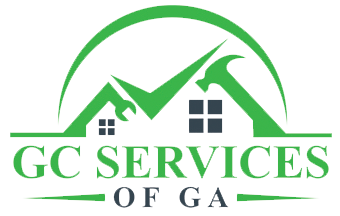Your home’s siding is its armor and attire all rolled into one. It safeguards your inner sanctum from the elements’ fury – rain, wind, and unwelcome critters – while simultaneously shaping your home’s visual identity. But with a plethora of choices available, selecting the perfect siding material can feel like navigating a labyrinth.
Fear not, intrepid homeowner! This detailed guide will illuminate the most popular siding options available today, empowering you to make a well-informed decision for your next home improvement odyssey.
1. Vinyl Siding: The Budget-Friendly Workhorse
Pros:
- Affordability: Vinyl reigns supreme in the budget arena. It’s one of the most economical siding options on the market.
- Low Maintenance: Vinyl boasts hassle-free upkeep. A seasonal cleaning with a hose and mild detergent is typically all it requires.
- Versatility: Vinyl comes in a vast array of colors and styles, including realistic wood grain patterns, to suit various design preferences.
- Durability: Vinyl is a resilient material that resists moisture, rot, and insect infestations.
Cons:
- Heat Sensitivity: In scorching temperatures, vinyl can warp and buckle.
- Weather Vulnerability: While moisture resistant, heavy storms with hail or flying debris can damage vinyl siding.
- Limited Lifespan: Compared to other materials, vinyl siding has a shorter lifespan, typically lasting 20-40 years.
2. Fiber Cement Siding: The Enduring Impersonator
Pros:
- Unequaled Durability: Fiber cement is a powerhouse when it comes to resilience. It mirrors the classic beauty of wood with the unmatched strength and longevity of concrete.
- Weather Warrior: Fiber cement stands firm against harsh weather elements, including rain, snow, and extreme temperatures.
- Fire Resistant: Fiber cement offers superior fire resistance compared to other siding materials, providing an extra layer of safety for your home.
- Low Maintenance: Pre-painted fiber cement siding requires minimal upkeep, similar to vinyl.
Cons:
- Cost: Fiber cement is a more expensive option than vinyl siding.
- Weight: Due to its composition, fiber cement siding is heavier than vinyl, which can affect installation costs.
3. Engineered Wood Siding: The Sustainable Standout
Pros:
- Eco-Friendly: Engineered wood siding is an excellent choice for the environmentally conscious homeowner. It utilizes recycled wood fibers, minimizing environmental impact.
- Natural Beauty: Engineered wood offers the undeniable charm of natural wood with enhanced resistance to moisture, warping, and insect damage.
- Versatility: Similar to vinyl, engineered wood comes in a variety of styles and textures to complement different architectural aesthetics.
- Low Maintenance: Pre-primed or pre-painted engineered wood siding allows for quick and easy installation, and requires minimal upkeep compared to traditional wood.
Cons:
- Cost: Engineered wood siding falls between vinyl and fiber cement in terms of price.
- Maintenance Needs: While lower maintenance than natural wood, engineered wood may require occasional repainting depending on your climate.
4. Metal Siding: The Unbeatable Low-Maintenance Champion
Pros:
- Unmatched Durability: Metal siding is the undisputed champion of longevity. It’s virtually impervious to the elements, including fire, rot, and insects.
- Minimal Maintenance: Metal siding demands very little upkeep. A simple cleaning with a hose or water sprayer is sufficient in most cases.
- Style Options: Metal siding comes in a surprising array of colors and styles, including corrugated panels and vertical seams, to suit modern and traditional aesthetics alike.
Cons:
- Initial Cost: Metal siding comes with a higher upfront cost compared to other options.
- Dent Vulnerability: Metal siding can dent if struck by hail or other flying objects.
- Curb Appeal: While styles have evolved, some homeowners may find the industrial look of metal siding less appealing for certain architectural styles.
The Quest for the Perfect Siding: Additional Considerations
Beyond the material itself, several other factors merit your attention when choosing siding for your home:
- Climate: If you reside in an area with extreme temperatures or frequent storms, prioritize siding materials proven to withstand those conditions.
- Maintenance: Consider the time and effort you’re willing to invest in maintaining your siding.
- Style: Select a siding material that complements your home’s overall architectural style.
- Cost: Obtain quotes from several qualified contractors to compare the cost of materials and installation for different siding options.
By carefully weighing these factors and the unique characteristics of each siding material, you’ll be well-equipped to select the perfect shield for your castle, ensuring its beauty and protection for years to come.
